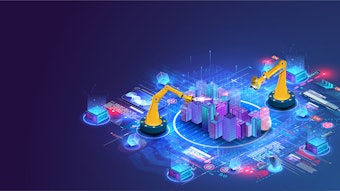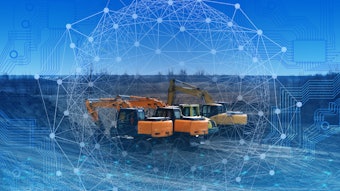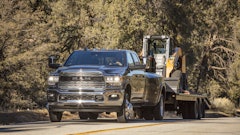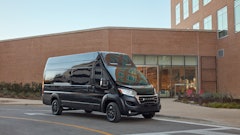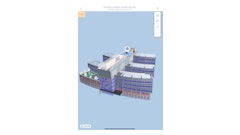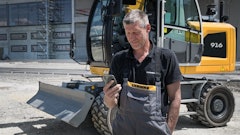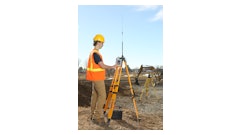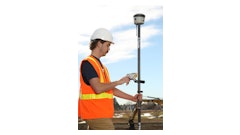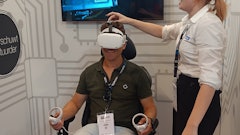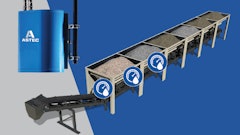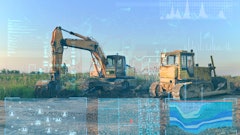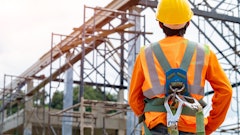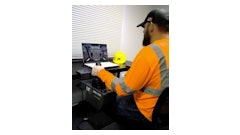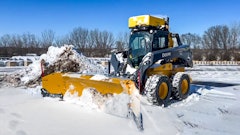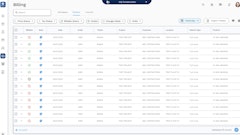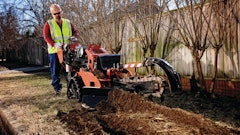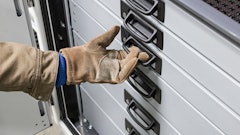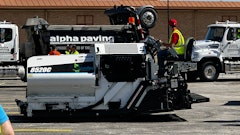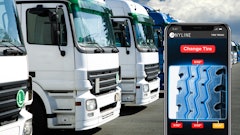
Artificial intelligence (AI) currently borders on the edge of crazy hype. While some are playing the waiting game to see how AI can help their industry, its impact on construction sites is clear: AI, when used properly, prevents crime and vandalism on jobsites.
Security on these sites runs the gamut, between live guards, fences and other protective provisions on one end, to nothing on the other end. But securing a jobsite is often a challenge for construction companies because the cost is often either passed on to the customer with higher prices or eaten by the company altogether. Construction sites can be “easy pickins” for criminals because they often contain expensive materials that are lightly guarded − exactly what criminals are looking for. This is one of the main reasons why the National Insurance Crime Bureau reports that theft costs construction companies as much as $1 billion per year.
AI-enabled security surveillance can make sites more secure. This can add up to big dollars when compared to the costs associated with stolen tools, lumber, appliances, heavy equipment or other valuables on the jobsite.
There are a number of things construction companies can do to reduce crime on jobsites. But the reason why AI-based video surveillance works well is that it enables valuable items to be watched at all times, without requiring the cost and management headaches of on-site personnel. When something odd is in the process of happening, AI can alert human monitors quickly so they can take appropriate countermeasures. And unlike humans, AI does not get distracted, become tired, or forget what it learned. This means it can look at video footage 24x7 and alert on anomalies that it sees.
Getting Smarter Over Time
What most people don’t realize is that AI gets smarter over time, learning from its specific environment to be more effective. The more it sees something, the better it gets − like someone who remembers something after experiencing it once. For construction companies, each site is different so this is very important. Well-trained AI will know when someone is on site who shouldn’t be there − or when the intruder is a person and not an animal − and will alert on it immediately.
AI video is usually made available through mobile video surveillance units that don’t require any hard wiring for electricity or internet connectivity, which is the state of most jobsites. These autonomous units can watch over valuable material and alert remote guards and site owners when something amiss is happening. These units also can use audio and visual deterrents to scare off would-be criminals and, if all else fails, remote guards can contact local authorities to intervene if something criminal is happening.
Enter the AI Era
Some companies have procured video monitoring equipment in an effort to reduce crime on jobsites. Over the years, this technology has evolved in three unique ways. Early generations of surveillance equipment were purely “record and store” technologies, which could provide after-the-fact evidence of a crime taking place on the jobsite. While this was useful for making insurance claims and providing evidence to law enforcement, it was passive in nature and didn’t do much, if anything, to prevent theft and vandalism.
The next step was remote video monitoring (RVM) services. This enabled construction companies to work with third parties to provide “around-the-clock” active monitoring. This brings us to the next evolution of video surveillance: using AI to analyze video in real time. Now instead of relying solely on humans watching hours or days of video feeds to detect suspicious events, AI can detect these events automatically and alert a person for further review. This is a real-world example of humans working in tandem with AI to become better at their jobs. But, for AI to be accurate and efficient in this scenario, it has to be trained on each specific jobsite so that it can tell the difference between something innocent and criminal.
This site-specific element to AI is important, because if it is not properly trained, AI video can generate a profusion of false positive alerts and send people down rabbit holes that defeat the whole reason for using AI in the first place - improving the accuracy and efficacy of surveillance.
No Two Sites Are Alike
Each jobsite is unique – some are in the country, others are in the city, some are near a busy road, others aren’t. This is why AI needs to be tuned to its specific location. For example, if the jobsite is located near woodlands, the AI needs to understand the difference between wildlife and people, otherwise it might issue an alert each time a raccoon stumbles onto the property. Also, AI needs to understand the difference between innocent and criminal behavior - whether the actor is on foot or in a vehicle, pausing, stopping or otherwise acting in a suspicious manner, or just passing by.
Machine learning − a component of AI − is the method for fine tuning and making AI smarter. The more “experience” AI gains watching activity, the more accurate and efficient it becomes in distinguishing activities that are actionable and those that are not. It stands to reason: a system that processes activity – both innocent and criminal – thousands of times will be more accurate than a system seeing an activity for the first time.
This is why AI should be specifically trained for each jobsite – for the uniqueness of their locations, the threats they face and the sources for false positives. This training can be conducted before the system goes live, with data from similar locations being run through the AI so it is properly trained from the start.
The more an AI video surveillance system can be fine-tuned to a unique jobsite, the faster and more accurately the system can deter criminal activity. There’s no such thing as “one-size-fits-all” when it comes to AI. When done properly, customizing and training AI for individual construction jobsites can be a powerful tool in crime deterrence.

